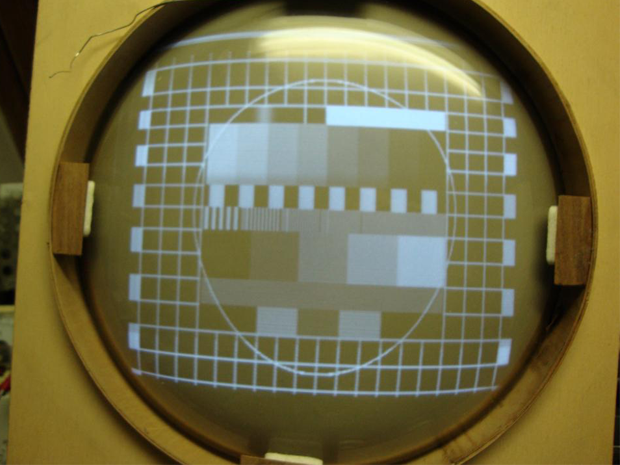
The device was built in modules so that modules could be completely replaced during the experiments.
The test setup we use a Grundig VG1000 as a measuring transmitter modulated with gray scale black / white.
And on the scope it becomes much clearer. it is therefore an unmodulated video signal which is put on the carrier wave in am.
The EQ80 has been used for a short time and works according to the quadrature detection principle. This is used to demodulate FM with phase shift.
With a time delay setting of the scope you can see why sometimes the sound rattles. In this case, a rattle occurred at the frame sync pulse. Here it is reduced to a minimum.
The power supply because the filament of the tubes are connected in parallel you need a huge power supply transformer.
There are 3 circuits located on this module. The vertical deflection. The horizontal deflection. And the high voltage.
The experimental character lies in the fact that the high voltage runs at 1Khz and is not part of synchronization. This was done in order not to redesign the entire device in the event of a broadcast standard change.
Because I didn't have a correct horizontal deflection transformer I did some tests with a line transformer.
The horizontal deflection transformer is in the tin on the right, what you see here in the photo. This can is empty and we will see it later.




